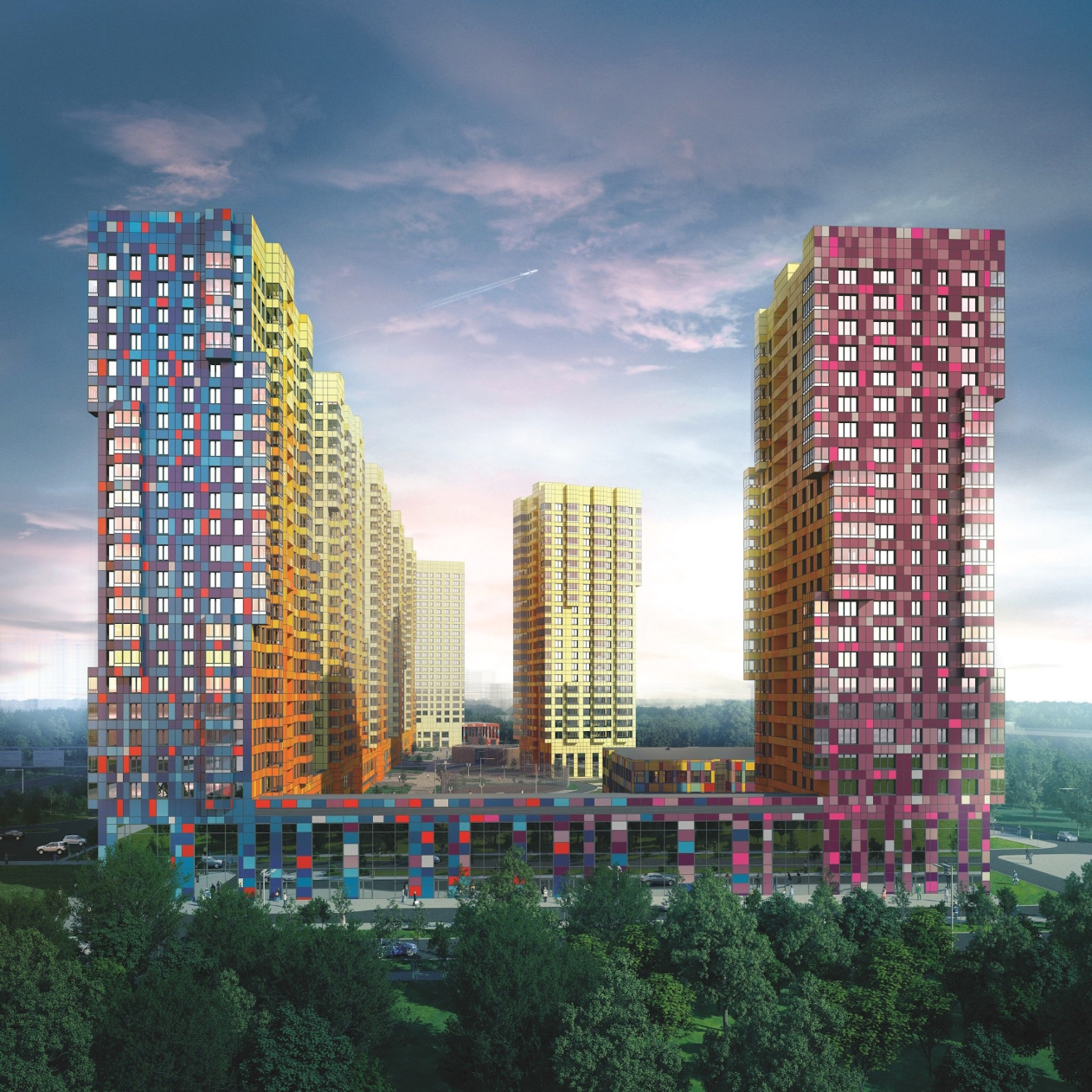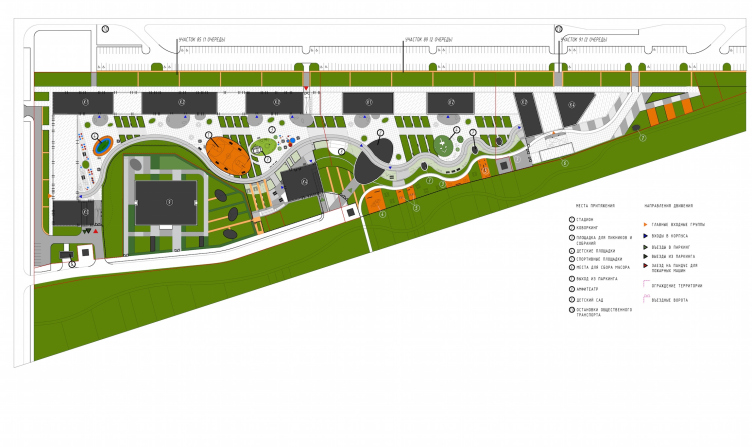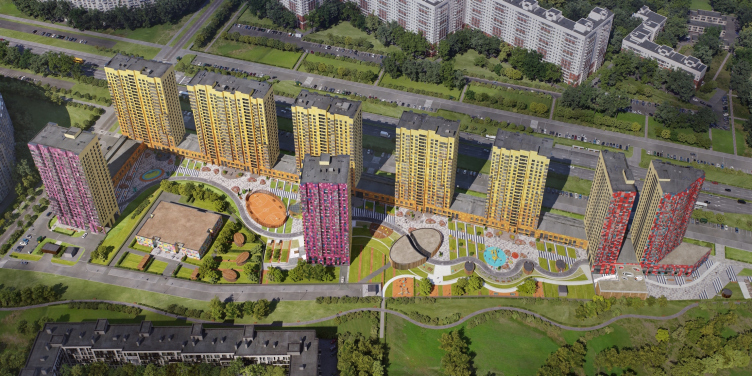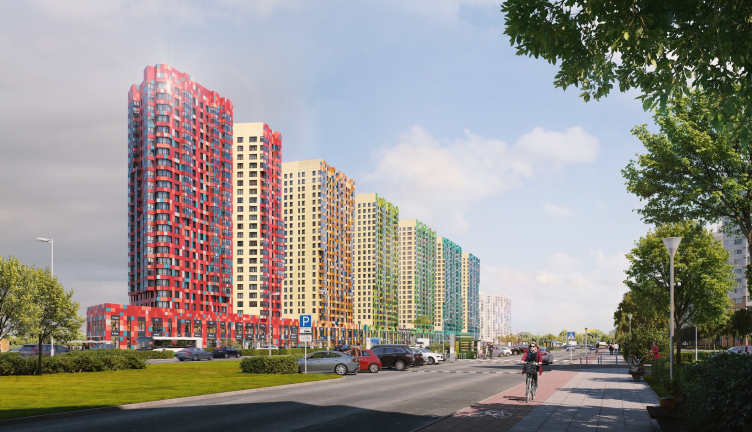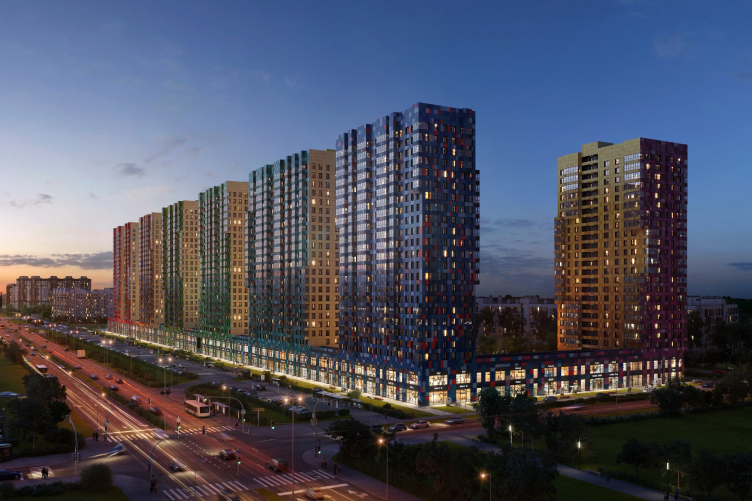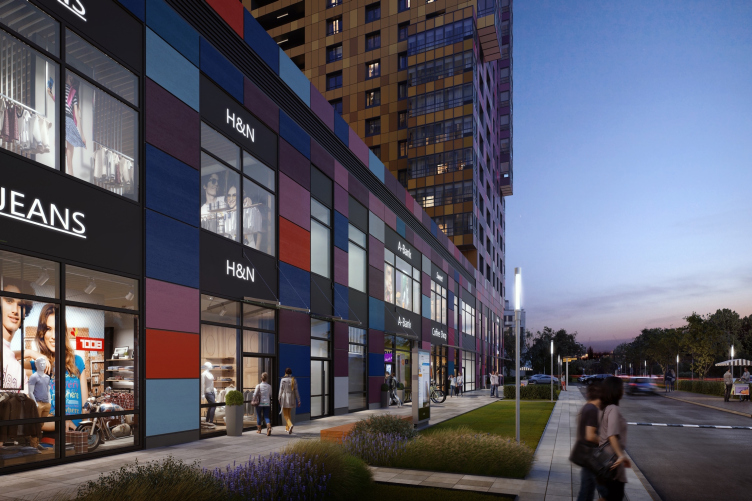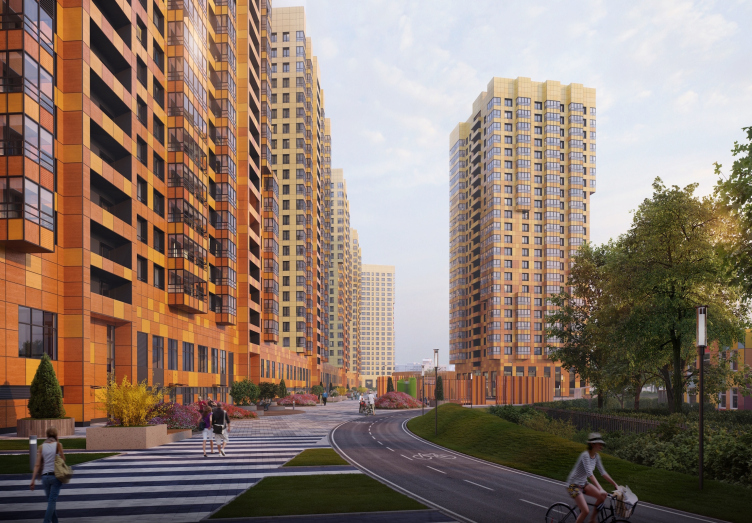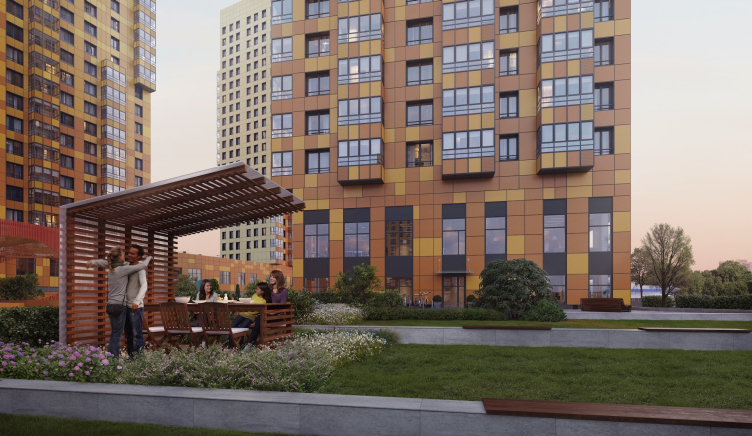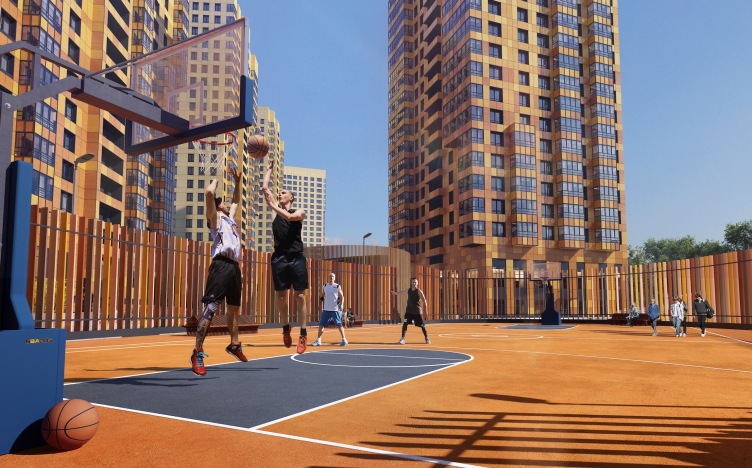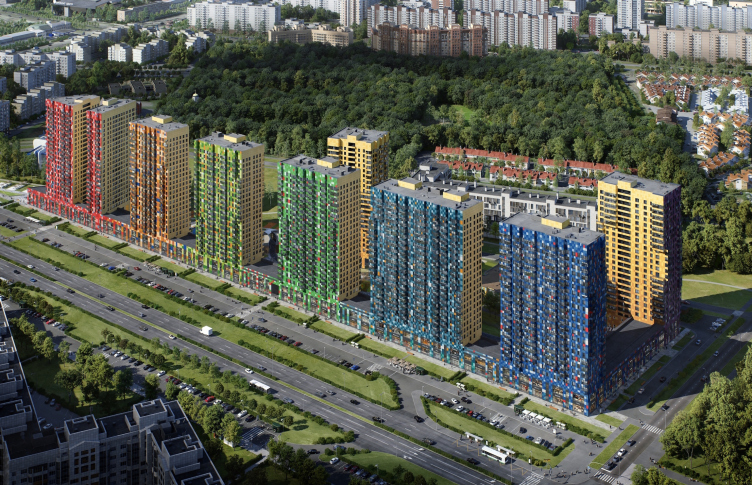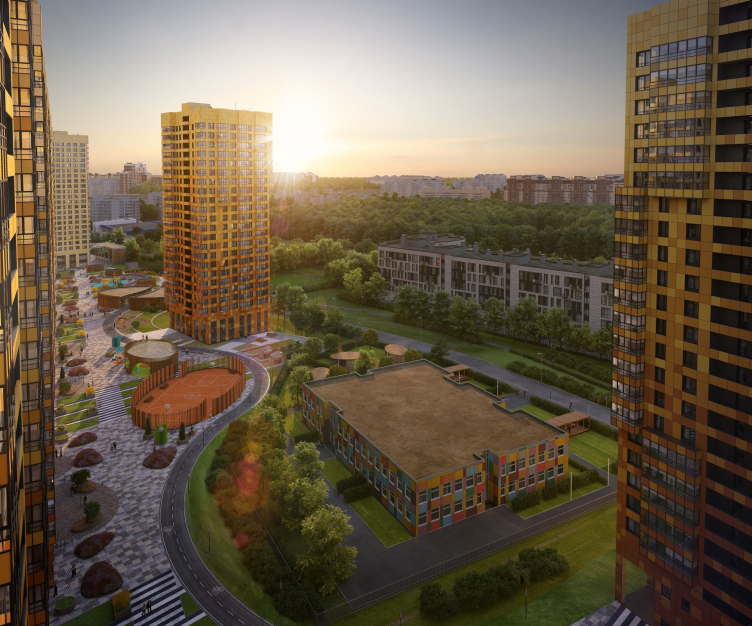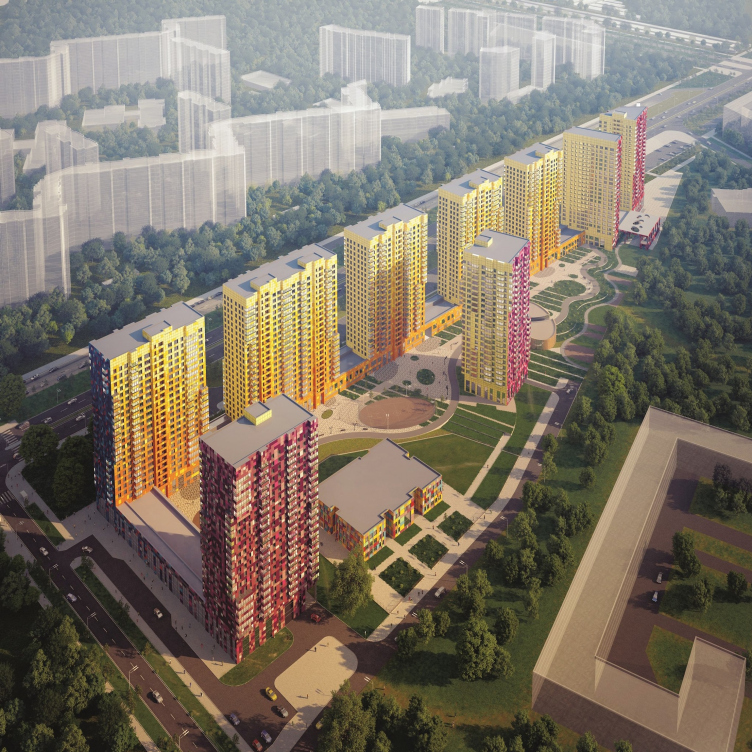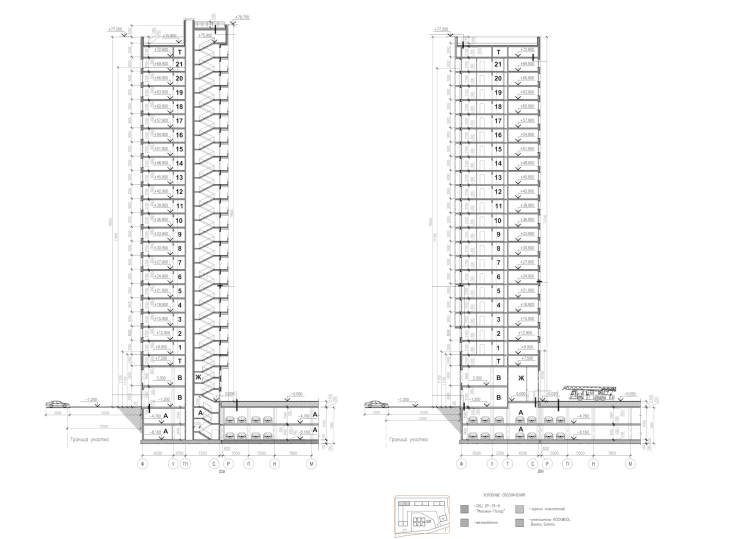Despite the seaming typicality, designing multiunit residential complexes is by no means a trivial challenge. Here, specific requirements of the client are added to the obvious restrictions connected with the peculiarities of the land site and the size of the budget. Trying to adjust to the conditions of the competitive market, the clients set increasingly high standards and rigid boundaries. A typical case is LEGENDA company, which works with new large projects in St. Petersburg. It became popular thanks to the so-called “smart approach” which implies great variety of apartment layouts – up to 50 different variants – so that every potential buyer could choose an option according to their needs and possibilities. This takes a great deal of invention and imagination of the architect – especially if it concerns low- and mid-price segment.
But then again, the first project of LEGENDA was exactly one of the “elite” category: neoclassical facades, natural stone finishing, décor in keeping with the best traditions of Stalin Empire style. All of this is the complex “Pobedy, 5”, a winner of multiple awards in the sphere of immobility which simultaneously became the first cooperation experience for the developer and “Evgeny Gerasimov and Partners” workshop. But, according to Evgeny Gerasimov, LEGENDA is a developer in search. It has set a popular goal – achieved by few: to build comfortable housing at affordable prices. During their work on the two pilot projects in mass segment, the company management determined the special “smart” principles. So when it came to a really large project (for 1470 apartments) in a quickly developing Primorsky District of St. Petersburg, the company turned to Gerasimov once again, in order to offer their clients not only practical apartment layouts, but also a worthy architectural solution.
So Evgeny Gerasimov’s task – from an architect’s viewpoint – was in many ways an ideological one. Moreover, it was complicated by irregular configuration of the lot, restricted by Nizhne-Kamenskaya Street and Komendantsky Avenue. The prolonged triangle shape and the neighbouring large green massif defined the main zones: the entrance and commercial area of the complex faces the avenue, and the private yard borders on the natural massif, which – despite the fences – becomes its visual extension.
Multiapartment buildings on the Komendantsky Prospect. View from the Glukharskaya Street. Project, 2015 © Evgeny Gerasimov and Partners
Multiapartment buildings on the Komendantsky Prospect. Master Plan © Evgeny Gerasimov and Partners
In the coming future, nine 21-storey towers with three addresses will appear here. It is a full-fledged residential quarter for almost 3000 residents: within a walking distance, there is an already functioning sporting center; and in plan, there is a school construction nearby and a kindergarten in the complex itself. The first construction line, belonging to address “Komendantsky, 58”, includes only five buildings and 1008 apartments. But it is enough to read the whole “design-code” of the future block.
Multiapartment buildings on the Komendantsky Prospect. Birds-eye view. Project, 2015 © Evgeny Gerasimov and Partners
Its basic principles actually do eco the modern “block construction standards”. One of them is open ground floors: all the towers are connected with a two-level styllobate, whose rooms along the perimeter are meant for commercial and public organisations. This will be the place for doctors’ and cosmetologists’ consulting rooms, caffes and shops, and inside the complex, intended for the residents – a space, fashionably called “co-working”. Here, those who work remotely will be able to use equipped workplaces, school students – do their homework more focused, and the rest – have neighborly conversations and share the news. The second level of the styllobate is an office floor. At that, access to the courtyard is closed for the “outside users”, so the necessary privacy is preserved.
Multiapartment buildings on the Komendantsky Prospect. View from the crossing of the Komendantsky and the Kovaleva prospects. Project, 2015 © Evgeny Gerasimov and Partners
Multiapartment buildings on the Komendantsky Prospect. Night view from the Glukharskaya Street. Project, 2015 © Evgeny Gerasimov and Partners
Multiapartment buildings on the Komendantsky Prospect. Stylobate with the public zones. Project, 2015 © Evgeny Gerasimov and Partners
When it comes to the yard arrangement, it is the right time to remember the unusual shape of the lot in combination with the famous “block construction standards”, one of which is complex creation of living environment. The two-level underground parking-lot takes up almost the whole area, while the yard is “divided” on its functional roof and rises more than one meter above the ground level. It allows to emphasize the division into pedestrian and motor traffic areas.
The client pays just as much attention to the functional richness of the yard, as to the apartment layouts. That is why, there are many different platforms and zones in the yard. For example, some platforms are intended specially for babies, others – for teenagers, and the third ones – for “grown-up” sports activities and picnics. This yard allows to hole up in private, or – on the contrary – arrange mass celebrations of neighbors. The numerous zones have different functions and different finish materials; but all of them are stylistically and physically united – by a 500-meter-long winding promenade-path.
Multiapartment buildings on the Komendantsky Prospect. Yard. Project, 2015 © Evgeny Gerasimov and Partners
Multiapartment buildings on the Komendantsky Prospect. Yard. Family zone for the picnics. Project, 2015 © Evgeny Gerasimov and Partners
Multiapartment buildings on the Komendantsky Prospect. Open-air gym. Project, 2015 © Evgeny Gerasimov and Partners
However, the most interesting part is the powerful architectural image of the complex itself, found by the authors: like an exotic avocado fruit, it faces the outside with its colorful, plastically rich “skin”, and the inside – with the bright, sun-yellow “flesh”. All the front facades of the complex are united with a colorful pattern that contains numerous pixels. At that, each house has its prevailing color, even though with many additional inclusions. As a result, each house obtained its own character within a uniform ensemble.
Multiapartment buildings on the Komendantsky Prospect. Birds-eye view. Project, 2015 © Evgeny Gerasimov and Partners
The balconies, stanzas and bay-windows “catch” the beams of the real sun. Their completely arhythmic placement on the facades was preconditioned by the calculated parameters defined by the orientation of the buildings along the cardinal points and laws of phisics; and so they seem to be only decorative. The towers, rectangular in plan, are as if made of two sections, shifted along each other – the colorful pixels become volumetric, “alive”, they start moving and lose their likeness to a dull mosaic panel.
Multiapartment buildings on the Komendantsky Prospect. View from the window. Project, 2015 © Evgeny Gerasimov and Partners
The apartment mix develops this idea. The buyer has an opportunity to choose an apartment from numerous options: for instance, one where the kitchen is united with the living-room, or separated from it; with the required number of bedrooms and bathrooms, with a dressing-room and a study. Among over 50 apartment layout options of the complex on Komendantsky Avenue, one is sure to find the wanted one.
The last stroke is the readiness level of the accommodations: the apartments are offered with “white” finish, which leaves the buyer only to settle the issues of paint-tiles-wallpaper-floors. It does not take much time or effort – unlike the apartments that are sold in shell condition – but allows the owners to implement their own design preferences, choose the colors and textures.
The first construction line of five towers is promised to be housed in the 4th quarter of 2018. Meanwhile, LEGENDA and “Evgeny Gerasimov and Partners” have started another common project – this time on Dalnevostochny Avenue, and once again with the “smart” layouts and in mass segment. This is the best proof of the fact that this ideological and architectural experiment was a success – and it is to be continued.
Multiapartment buildings on the Komendantsky Prospect. Birds-eye view. Project, 2015 © Evgeny Gerasimov and Partners
Multiapartment buildings on the Komendantsky Prospect. Section views. Project, 2015 © Evgeny Gerasimov and Partners
